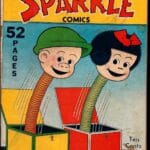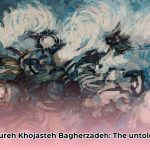Have you ever stopped to wonder why Santa Claus is depicted the way he is, or why hanging stockings by the fireplace is such a cherished tradition? The answer lies, in large part, with a single poem: “‘Twas the Night Before Christmas.” Penned nearly two centuries ago, this seemingly simple verse has had an outsized impact on shaping how we celebrate Christmas. More than just a charming story, it’s deeply woven into the fabric of our holiday customs. Join us as we explore the poem’s journey to iconic status, what makes it so enduring, and how its influence continues to resonate today. Prepare to uncover the captivating story behind the magic!
A Holiday Classic: Exploring the Enduring Appeal of “A Visit from St. Nicholas”
“A Visit from St. Nicholas,” universally recognized as “‘Twas the Night Before Christmas,” transcends its status as a mere Christmas rhyme. It stands as a significant piece of our cultural heritage, intricately woven into the tapestry of our holiday celebrations. The words spark joy, evoke nostalgia, and transport millions worldwide to a realm of childhood wonder. But how did this unassuming poem ascend to such legendary heights? Let’s embark on a journey to uncover its fascinating origins and examine its lasting impact on our culture.
From Obscurity to Icon: The Poem’s Remarkable Journey and Timeless Appeal
Contrary to what one might expect, this now-ubiquitous poem didn’t achieve instant fame. Its debut was rather humble, appearing anonymously in a newspaper—a small spark in a world devoid of the internet’s reach. However, that spark ignited a phenomenon. Readers were captivated by its simple yet elegant rhythm, its vivid and enchanting imagery, and its heartwarming message of generosity and goodwill. Passed from person to person, family to family, the poem spread like wildfire, becoming a viral sensation long before the digital age. Its memorable verses, painting a picture of a cheerful, gift-bearing Santa and his fantastical reindeer sleigh, captured the collective imagination and became a quintessential element of the holiday season.
Shaping an Icon: How the Poem Defined Santa’s Image and Enduring Appeal
The poem’s influence on our Christmas traditions is undeniable. We owe much of our modern conception of Santa Claus—the jovial, red-suited figure soaring through the night sky in a sleigh pulled by reindeer—to Clement Clarke Moore’s descriptive verse. Prior to the poem’s publication, Santa Claus’s appearance was far from standardized, with various and often conflicting depictions. Moore provided a universally recognizable symbol of Christmas cheer, a mental image that instantly conjures feelings of joy and anticipation in children and adults alike. The poem’s simple rhyme scheme made it easily accessible and memorable for children, ensuring that these images were firmly planted in their minds and passed down through generations, cementing Santa’s now-classic appearance.
Beyond the Rhyme: The Poem’s Enduring Themes and Cultural Significance
“‘Twas the Night Before Christmas” resonates so deeply because it captures universal emotions—the enchantment of Christmas Eve, the comforting warmth of family, and the delightful anticipation of gifts. These feelings are not bound by time or culture, and the poem’s simple yet heartfelt words speak to our inherent desire for hope, joy, and connection during the holiday season. Is this not the very essence of Christmas? The feeling of “Happy Christmas to all, and to all a good night”—a sentiment we all yearn for during this special time. This elevates the poem beyond mere verse, transforming it into a cherished tradition, a cultural touchstone, and a reminder of the values we hold dear during the holidays.
Unraveling the Enigma: Exploring the Authorship Debate and Historical Context
While the poem’s impact is undeniable, some aspects of its history remain shrouded in mystery. Lingering debate surrounds its precise publication date and even the true identity of its author. While Clement Clarke Moore is widely credited, some scholars propose alternative candidates or influences. This uncertainty, however, does not diminish the poem’s significance; rather, it adds an element of intrigue to its already rich and fascinating story. Future research may shed further light on these unresolved questions, providing a deeper understanding of this timeless classic.
A Legacy Endures: The Poem’s Continued Influence on Modern Culture
The impact of “‘Twas the Night Before Christmas” continues to be felt today. The poem has served as inspiration for a multitude of adaptations across various media – from films and songs to cartoons and countless illustrations. The poem’s vivid images and heartfelt message are constantly reinterpreted, reimagined, and celebrated, testament to its lasting power and the magic it evokes. Its journey from anonymous newspaper column to a worldwide phenomenon is a testament to the power of storytelling and its ability to shape our understanding and celebration of Christmas. Its enduring popularity suggests that its themes and imagery will continue to resonate for generations to come, solidifying its place as a cornerstone of our holiday traditions.
Reflections on a Classic: The Enduring Power of ‘Twas the Night Before Christmas’
From humble beginnings as a newspaper filler to its current status as a global Christmas classic, “‘Twas the Night Before Christmas” continues to capture the hearts and imaginations of people around the world. Its deceptively simple charm, its memorable images, and its heartwarming message of joy, generosity, and connection make it a timeless treasure, a gift that keeps on giving year after year. The poem’s remarkable success can be attributed to a potent combination of factors: a relatable depiction of childhood wonder, skillful use of rhythm and rhyme, and a timeless message of goodwill and cheer. It serves as a potent reminder of the power of simple storytelling to create and sustain cherished holiday traditions. The poem’s enduring popularity stands as a testament to its timeless charm, and its legacy will undoubtedly continue to inspire and delight for many years to come.
How Did ‘Twas the Night Before Christmas’ Shape Modern Christmas Traditions?
Key Takeaways:
- The poem solidified the modern Santa Claus imagery, providing a universally recognized depiction.
- The poem’s disputed authorship adds to its intrigue and ongoing scholarly interest.
- Its publication coincided with a shift toward more family-focused Christmas celebrations.
- The poem’s impact continues to be felt in media and cultural representations of Christmas.
The Emergence of a Jolly Icon: Santa’s Modern Image Defined
Prior to 1823, Santa Claus, or St. Nicholas, was a figure lacking a consistent image. His depictions varied widely, ranging from jolly and benevolent to stern and even somewhat intimidating. The anonymous publication of “‘Twas the Night Before Christmas” revolutionized this. The poem’s charming verses, with its description of a cheerful, round-bellied Santa descending a chimney with a sleigh overflowing with toys, fundamentally altered our perception of the holiday icon. How did ‘Twas the Night Before Christmas’ influence modern Christmas traditions? In essence, it provided the blueprint for the Santa Claus we know and love today. Envision the poem as the foundational document for our modern Christmas iconography, shaping the image of Santa for generations to come.
An Enduring Authorship Mystery: A Century-Long Debate
The poem’s enduring impact is further amplified by the persistent question of its authorship. While Clement C. Moore formally claimed authorship in 1844, the Livingston family continues to dispute this claim, presenting Henry Livingston Jr. as the poem’s true creator. This debate, fueled by stylistic analysis and conflicting evidence, remains unresolved. The unresolved mystery only enhances the poem’s allure, transforming it from a simple festive rhyme into a literary puzzle wrapped in holiday cheer. Did the true author ever receive proper recognition? The debate continues to fuel discussion and scholarly exploration.
Beyond Santa: The Poem’s Role in Shifting Christmas Traditions
The poem’s influence extends beyond its enchanting portrayal of Santa Claus. Its publication coincided with a significant shift in the nature of Christmas itself. The holiday, once characterized by boisterous public celebrations, began to evolve into a more intimate, family-centered occasion. “‘Twas the Night Before Christmas,” with its emphasis on familial warmth and the magic of Christmas Eve, perfectly captured this evolving spirit. This shift is intrinsically linked to the poem’s widespread influence and popularity. It promoted a sense of togetherness, emphasizing the importance of shared moments and creating lasting memories within the family unit.
The Poem’s Unwavering Presence in Modern Culture
The poem’s impact continues to resonate profoundly today in pervasive ways. From Thomas Nast’s iconic illustrations in Harper’s Weekly to countless adaptations in the form of films, music, and advertising, the poem’s influence is felt across various forms of media. Even Coca-Cola’s classic depictions of Santa Claus draw heavily from the poem’s descriptive verses. We continue to recite the poem’s familiar verses each year, perpetuating its influence across generations. More than just a poem, it has become a cultural cornerstone, a shared experience that connects us to the magic of Christmas.
A Lasting Legacy of Holiday Traditions
How did ‘Twas the Night Before Christmas impact modern Christmas traditions? It profoundly shaped them, defining a key figure in the narrative, influencing widespread imagery, and perfectly capturing the spirit of a changing holiday. This seemingly simple poem has left an indelible mark on our Christmas traditions, a legacy that continues to captivate, fascinate, and delight us. The story of ‘Twas the Night Before Christmas’ is as much about the evolution of a cultural symbol as it is about the enduring power of language and the human imagination. One could argue that the poem significantly shaped Christmas as we know it today.
















